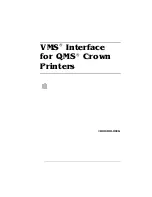
Reference
Signal
Device
under test
Objective
measurement
method
Audio
quality
estimate
OPTICOM Product Line:
Voice/Audio Quality
PESQ ITU-T P.862
3SQM ITU-T P.563
PSQM ITU-T P.861
ECHO
PEAQ ITU-T
BS.1387
Video Quality
PEVQ
Network Quality
VQmon
Voice
Quality Testing
PEAQ – Perceptual
Evaluation of Audio Quality
OPTICOM's PEAQ (Perceptual Evaluation of
Audio Quality) provides accurate and repeatable
estimates of audio quality degradation occur-
ring through e.g. coding procedures. It compares
the audio signal input to a device under test
(DUT) with the corresponding (degraded) audio
signal output from that device on a perceptual
basis.
Being already widely used in active testing in
lab environments, OPTICOM's PEAQ measure-
ment has achieved a great reputation for its
ease of use and its reliability of its results while
avoiding the costs for expensive and time con-
suming listening tests.
PEAQ is fully compliant to ITU-R BS.1387 cover-
ing the applicability to high quality audio sig-
nals with sampling frequencies of 44.1-48kHz.
OPTICOM who is the leading provider of signal
based perceptual measurement technologies
and sole licenser for PEAQ offers algorithms for
voice, audio and video quality measurements.
The intention of a measurement tool like PEAQ
is to evaluate the audio quality of an audio
device under test, e.g. an audio codec. PEAQ
compares the input and output audio signal of
that device and outputs a quality score that rep-
resents the Basic Audio Quality of the output
signal and therefore also the quality of the
device. The comparison of the two signals takes
only perceptual differences into account, while
imperceptible distortions are neglected. In order
to be able to distinguish between perceptible
and imperceptible distortions PEAQ employs a
multitude of perceptual measurement concepts
using different ear models from which different
signal representations are derived.
PEAQ in general comprises ear models based
on the fast Fourier transform as well as on a fil-
ter bank. The output values of the models are
based partly on the masked threshold concept
and partly on a comparison of internal represen-
tations (also known as comparison in the
cochlear domain). In addition, it also yields out-
put values based on a comparison of linear
spectra, which are not processed by an ear
model.
The model outputs the partial loudness of non-
linear distortions, the partial loudness of linear
distortions (signal components lost due to an
unbalanced frequency response), a noise to
mask ratio, measures of alterations of temporal
envelopes, a measure of harmonics in the error
signal, a probability of error detection, and the
proportion of signal frames containing audible
distortions. Selected output values are mapped
to a single quality indicator - the Objective
Difference Grade (ODG) - by an artificial neural
network with one hidden layer. The ODG indi-
cates the measured basic audio quality of the
signal under test on a continuous scale from -4
(very annoying impairment) to 0 (imperceptible
impairment). Besides the ODG the model out-
puts a complementary quality value – the
Distortion Index (DI). The DI is a quality indica-
tor like the ODG except for its higher sensitivity
towards very low signal qualities.
Key Features:
• Perceptual analysis of
degradations in audio sig-
nals
• Well established, repeat-
able results
• Output score correlates
very well with subjective
tests
• PEAQ Basic for real-time
measurements
• PEAQ Advance for more
detailed quality analysis
Principle
PEVQ™, 3SQM™ and the OPTICOM logo are registered trademarks of OPTICOM GmbH; the ‘single-sided speech quality measure’ and
‘the perceptual quality experts’ are trademarks of OPTICOM GmbH. This information may be subject to change.
All brand and product names are trademarks and/or registered trademarks of their respective owners.
All rights reserved. Copyright © 2005 OPTICOM GmbH – www.opticom.de




















